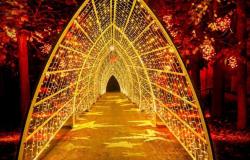Absent from the debates and speeches of the candidates, the subject of climate risks not being a priority under the new presidency of Donald Trump. The president-elect of the United States is openly climate skeptic and pro-oil.
His return to the White House will inevitably mark a 180-degree turn in US environmental and climate policy and jeopardize global efforts to curb human-caused global warming.
« Or liquide »
The Republican promised during his campaign to “drill at all costs” and openly questioned the reality of climate change, contrary to the energy transition policy initiated by his predecessor Joe Biden.
“We have more liquid gold than any country in the world. More than Saudi Arabia or Russia,” the tycoon praised in his victory speech, referring to oil and gas. Immediate consequence, without even waiting for his inauguration in January: the voice of American negotiators at COP29, which opens Monday in Azerbaijan, will be weakened.
The Paris agreement still in turmoil
At the end of his first term, Donald Trump withdrew the United States from the 2015 Paris climate agreement, before Joe Biden reinstated it in 2021. The new president will be able to start again as soon as he enters the White House on January 20, which would make the withdrawal effective in January 2026.
However, it is within the framework of this agreement that the United States committed to reducing its greenhouse gas emissions by half by 2030, compared to 2005. In 2023, this reduction was at 18%, according to the Rhodium Group research center. For all experts, this objective will move away with the victory of Donald Trump. With an impact on global warming.
Cancellations galore
Trump also pledged to “cancel all unspent funds” from Joe Biden's flagship climate law (known as the “IRA”), which injected hundreds of billions of dollars into tax credits and investments in clean energy.
Our file on the American presidential election
Other promises: cancel the moratorium on new liquefied natural gas (LNG) export terminals or new regulations on car emissions aimed at accelerating the transition to electric.
Other recent standards, notably on limits on CO2 emissions from coal-fired power plants, could be overturned without even having to go through the US Congress. But these proceedings will take time – at least months, if not longer, and will likely be fought in court.






